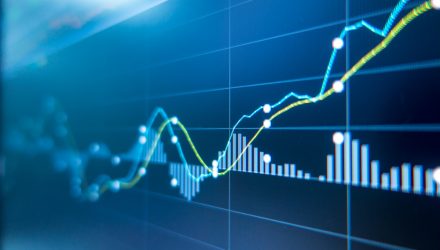A high yield, high beta exchange-traded fund (ETF) strategy might seem expensive at first glance, but at a 0.20% expense ratio, investors can get access to this fixed income alternative via the High Beta High Yield Bond ETF (HYUP).
HYUP seeks investment results that correspond generally to the performance, before fees and expenses, of the Solactive USD High Yield Corporates Total Market High Beta Index (the “underlying index”). The fund will invest at least 80% of its total assets, (but typically far more) in component securities of the underlying index.
The underlying index is designed to track the performance of the segment of the U.S. dollar denominated high yield corporate bond market that exhibits higher overall beta to the broader high yield corporate fixed income market. Per the fund’s prospectus, “high beta investing entails investing insecurities that are more sensitive to changes in the market, and thus more volatile based on historical market index data.”
Making a Case for High Yield Bonds
Exposure to high yield debt poses a Goldilocks sort of balancing act: not too hot, and not too cold. In the case of an ETF portfolio, it’s not too much or too little.
An article by Jeff Harrell in Kiplinger explained this perfectly, especially at a time when the market environment is still up in the air given the pandemic:
“During this period, I advised my clients with a high tolerance for risk to consider one move: to swap approximately 10% to 15% of their high-quality bonds for high-yield bonds,” the article said. “Although I was confident the shift would result in a favorable outcome looking out a year or more, the move has paid off much quicker than anticipated. High-quality bonds have only inched up slightly over the past six months, whereas high-yield bonds have gained approximately 15%.”
“Admittedly, while the case for continuing to buy high-yield bonds isn’t as compelling today as it was in March, I believe they can still be a valuable component of an investor’s portfolio,” the article added further. “For an investor with a traditional portfolio of 60% stocks and 40% bonds — but without these securities — it may make sense to trim a small percentage from both instruments and place 5% to 15% of a portfolio in these bonds.”
This is where it comes down to getting the right amount of exposure for a portfolio.
Harrell noted that when it comes to risky debt, “if used properly, high-yield bonds can be a complementary component of a more conservative bond allocation.”
For more news and information, visit the Smart Beta Channel.

